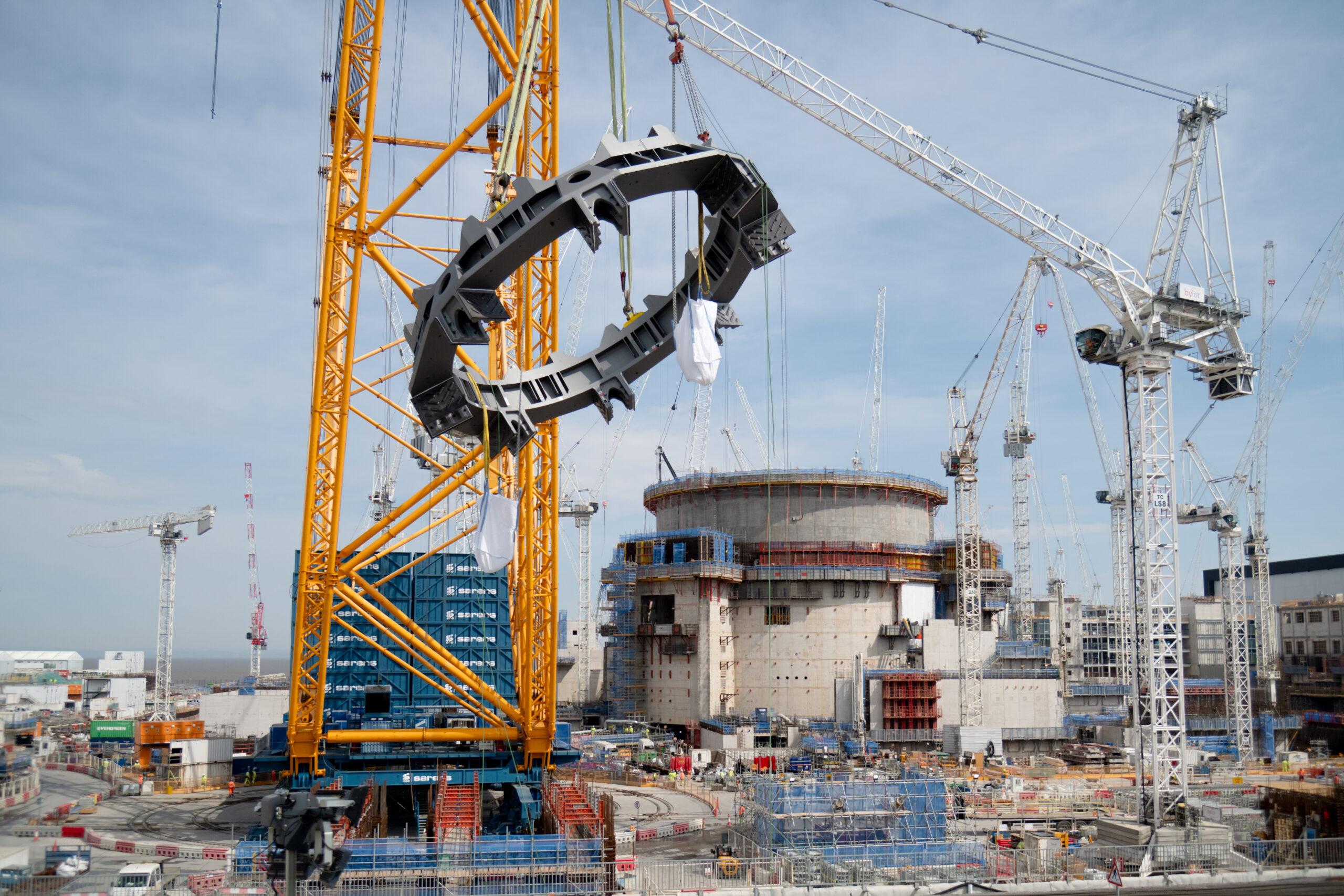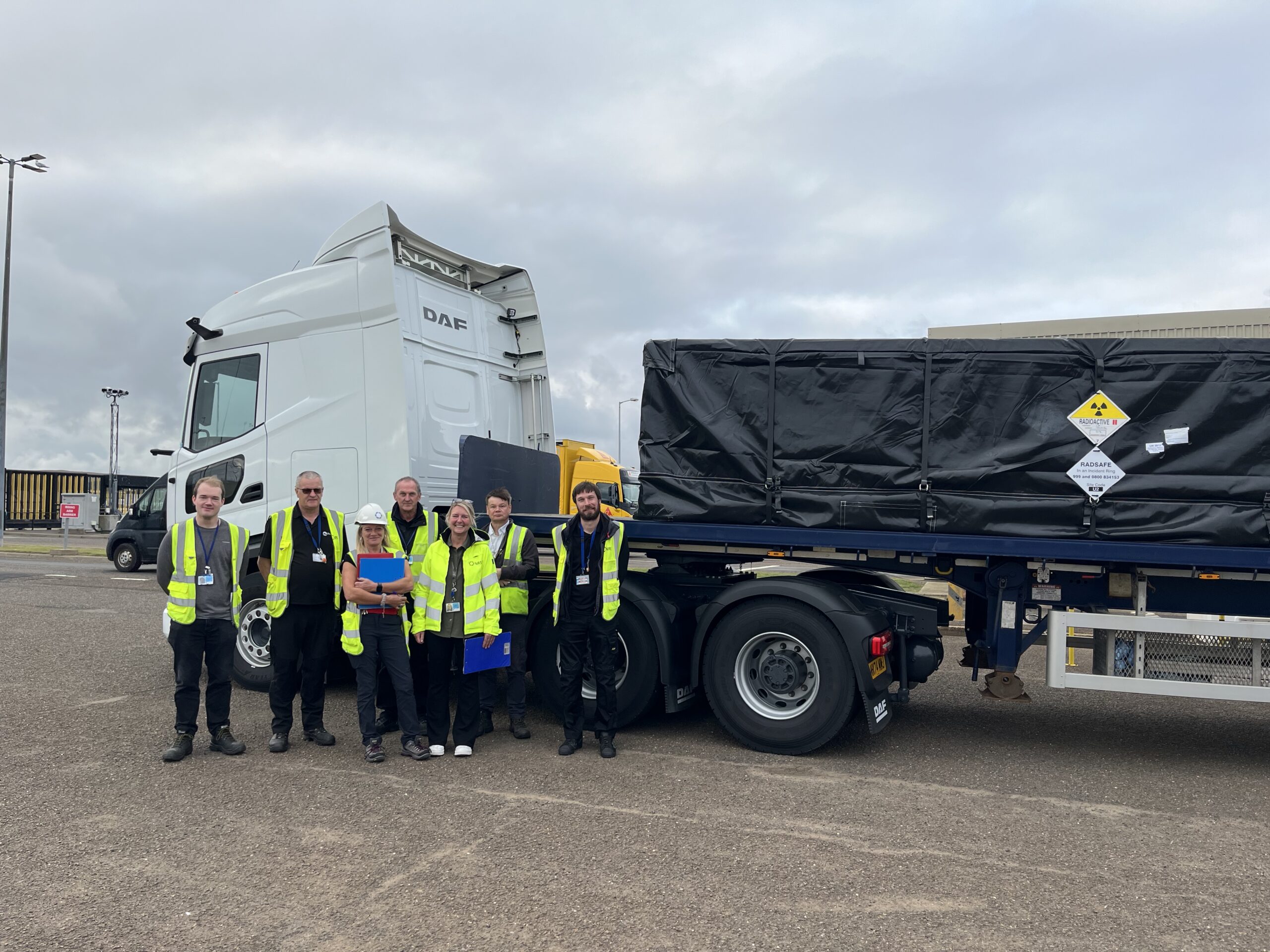30 years on, Brian George remembers the making of Sizewell B
Sizewell B stands at the pinnacle of British nuclear. Despite the longest and most expensive public inquiry in British history, major changes to the civil design midway through (“the densest rebar the contractor had ever known”), and the dissolution of the original owner, Sizewell B was a triumph. From first concrete to first power, it took 6 years, 7 months, the fastest of any British reactor relative to its size. It has the highest load factor of any reactor in our history, and it will have the longest life by far.
I spoke with the man who led the project from the beginning, Brian George. From the start, he is adamant that his background as an engineer with practical experience designing and making things, and as a man on the shop floor used to dealing with everybody, was key to the project’s success.
A star pupil as a young boy in England, George immigrated with his family to Queensland, Australia when his father accepted an engineering job there. Upon finishing school at 16, George notes that “I only ever applied for one job in my life”, as a welder and a coppersmith. He recalls wryly how in 1952, “the relationship between the English and the Australians was very bad. The first I learned was that if you get into fight, making up your mind if you are going win or lose. Whichever it is, do it quickly, because no one wins from a long fight.” He learned to weld as well as to fight, such that after just one year he was asked to join the drawing room as a designer. They sent him down to the shop floor once more to sort out an Australian apprentice who wasn’t performing. George got him up to scratch and reflects on the lesson: “you have to manage the people. Without that you won’t succeed.”
The budding designer returned to England at 18, because his mother couldn’t stand Australia. There, he found himself in high demand in the quarter century that followed. Napier’s took him on as an apprentice toolmaker, eventually sending him to do the Higher National Certificate in engineering, which became a First Class Honours university degree. He rose to become the leader of the drawing office at the Nuclear Design and Construction consortium of Babcock, English Electric, and Taylor Woodrow. There, he was involved in commissioning Wylfa A, then the largest nuclear power station in the world, and deeply involved in designing the AGRs at Hartlepool and Heysham.
As George puts it, “And then they started building. And it was awful really. Everything wrong with project management was there. There was no authority for the project manager to do what was necessary.”
George took that lesson to heart when the Central Electricity Generating Board, long a suitor, finally poached him to lead their PWR programme in 1978. Sizewell B was to be the first of ten.
Up until that point, the CEGB had appointed independent consortia to do the design and build of the stations, which were then turned over to the CEGB for commissioning and operations. However, this time, scarred by consortia failures on the AGR projects, the CEGB would take more direct responsibility for project management of design and construction. The man in charge would be Brian George.
He points out that he knew the people at the consolidated National Nuclear Consortium (NNC) very well, so he picked the people he wanted from the NNC and left the people he didn’t. With a team of 120 from the NNC and 40 or 50 from the CEGB, he set about fixing the design he got from the Americans. He recalls that “the American design was not too good from a construction point of view. It was too tight.” He points out that since he was a welder from the age of 16, he knew that “to do a Class 1 weld, you need space around it. You can sit there. Both NNC and Westinghouse were getting that wrong.” He increased the diameter of the containment vessel by 10 feet, so that workers would both have space for construction and be able to get into radioactive areas for maintenance without having to lean directly against active components.
In that vein, he commissioned a 1 inch: 1 foot model of all the rooms in the station with wiring and pipework construction in it. He recalls it cost £7 million to produce that model (£21 million today), but it was “worth every penny, because all the contractors could look at it and agree on the access and timing they needed for each space.”
Even the best-laid plans, however, faced significant disruption. George notes that “once we got the go-ahead and got the design all sorted, and we based the civil contracts on that”, the then-Nuclear Installations Inspectorate then insisted that the reactor had to resist a simultaneous earthquake and primary circuit break. He adds drily, “even though none of us could figure out how that would happen.” That changes used up a big chunk of the time contingency on the site and meant he had to shift the civil works contracts from fixed prices to cost reimbursable with agreed margins and incentives for performance. I ask George if he thought of contesting the regulators’ judgement. He recalls his early lesson from Australia: “you could not afford to get into a long argument and lose it.”
Nonetheless, George vividly declares that “there had never been a project where the project director was given such power.” When his C&I provider was unwilling to supply him before another client, he sacked them, got on Concorde, and flew to the USA to see Westinghouse to get an alternative proposal. He offered them a £10 million bonus, £100,000 for each of 100 key dates, but £0 if they were 8 weeks late, “no argument, no discussion.” He took a one-page contract back with him (“I know you buggers. You’ll take at least 6 months to get the detailed contract sorted. The one page will take precedence in English law.”)
The 100 major installations on the site were delivered on time.
George fondly remembers that Sizewell B had a culture of its own, driven by “an absolute insistence on honest reporting. If there was a problem, it had to be reported straightaway and honestly, so we could get round the table and see how we could alleviate the consequences.” He notes that it took time because “people tried to hide when they were getting things wrong”, but honest reporting “made them feel that they were an important part of the development.”
That they most certainly were, and George rightly takes pride in the station his team built. He puts the public inquiry led by Sir Frank Layfield into Sizewell B in the dock for making three assumptions about this new PWR:
- It would only achieve a load factor of 64%.
- It would take 94 months’ from the construction permit to fuel load.
- It would only operate for 25 years.
The station took 84 months from permit to fuel load, and today, after 30 years’ of life (with 30 more beckoning), its load factor sits at 84%. The project had a budget of £1.6 billion, with a £400 million contingency that absorbed the public inquiry’s demands for changes to the construction design, and it stayed on that budget.
But what about the future of the sector? George himself does worry about the younger generation of engineers. He observes that modern advances have vastly expanded our technical capability, it has come at the expense of the personal relationships. He remembers that on Sizewell B, “every week you were on site, you could talk to everybody. You got to find engineers who can do all of those things. Now kids have their faces in their phones. They don’t have that capability anymore.”
The most empowered project director in British nuclear history ends with a renewed plea to remember the human element: “if you are going to hand over that kind of power, you have to hand it to the right people!”
 Lincoln Hill is Director of Policy & External Affairs at the Nuclear Industry Association.
Lincoln Hill is Director of Policy & External Affairs at the Nuclear Industry Association.
This article was first published in the summer issue of Industry Link.
Back to the hub











